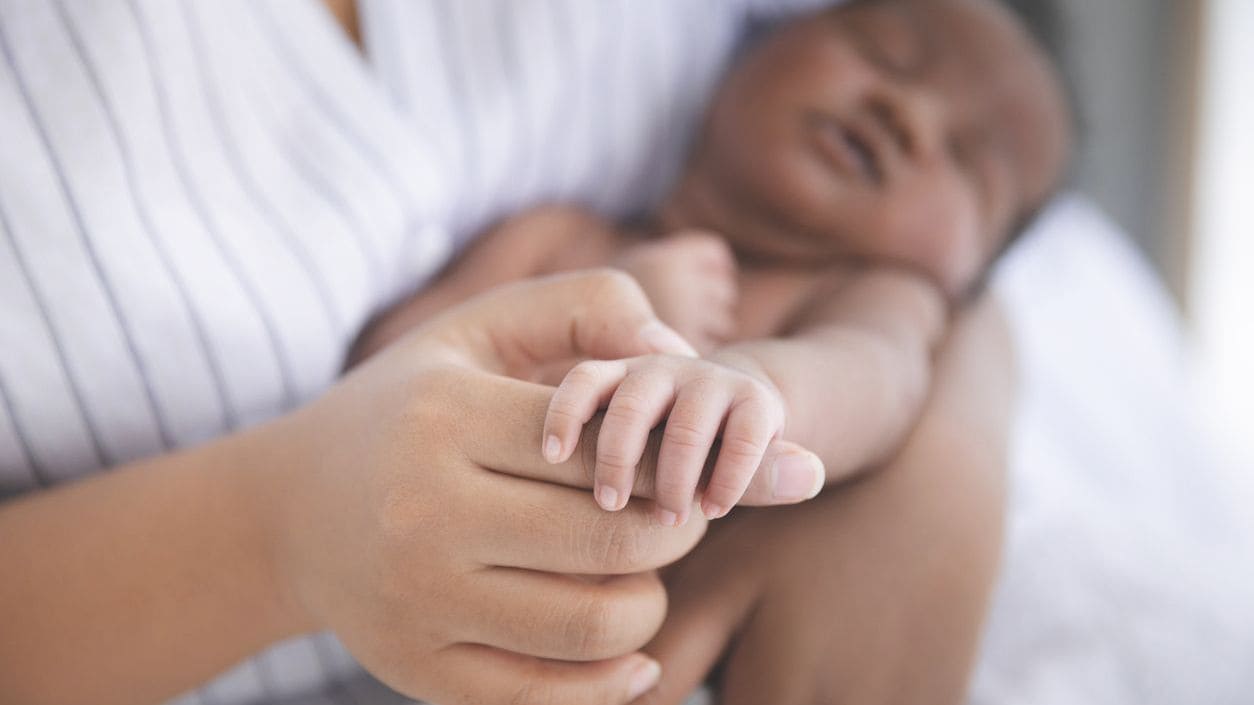What to know
- Understanding health issues and treatments for infants with spina bifida can help parents and caregivers make the best possible choices for their child.
- Each child and their needs will evolve as they grow and develop.
- Care during infancy is typically focused on treating problems that can worsen their condition or identifying if the condition is changing.

Learning about spina bifida
When parents find out they are going to have a child with spina bifida, it can be overwhelming. It's important that they know that most children born with spina bifida reach their full potential.
It may be helpful for parents and caregivers to understand the health issues and treatment options to make the best possible choices for their baby. If you're caring for a baby with spina bifida,
- Talk with a health care provider about questions or concerns you have.
- Learn about spina bifida.
- Visit the Spina Bifida Association website for more resources.
Finding support
Physical health
No two babies with spina bifida are exactly alike. Each child's condition will evolve as they grow and develop. Some babies have health issues that are more severe than other babies.
Most of the focus of care in infancy is on:
- Treatment of problems that worsen the condition.
- Diagnostic testing to identify when the condition may be changing.
Myelomeningocele
When a baby is born with myelomeningocele (called open spina bifida), the spinal cord is exposed. Doctors perform surgery to close it. Surgery can happen before birth or within the first days of the baby's life.
Hydrocephalus
Many babies born with spina bifida get hydrocephalus (called water on the brain). This is caused by brain fluid not appropriately draining through the natural channels in the brain and spinal cord. This results in extra fluid in and around the brain. The extra fluid can cause the spaces in the brain, called ventricles, to become too large, and the head can swell. Hydrocephalus needs to be followed closely and treated properly to prevent brain injury.
If a baby with spina bifida has hydrocephalus, a neurosurgeon can put in a shunt. A shunt is a small hollow tube. When placed, it drains fluid from the baby's brain and protects it from too much pressure.
The most common route a shunt can take is from the brain into the abdominal cavity (ventriculoperitoneal shunt). However, shunts can also drain into the heart or other structures. Additional surgery might be needed to adjust the shunt as the child grows up. Surgery may also be needed if it breaks or becomes clogged or infected.
For more information, please visit the following website:
Guidelines
Mobility and physical activity
Doctors can start treatment for movement problems soon after a baby with spina bifida is born. A physical therapist can work with caregivers to teach them how to exercise a baby's legs to increase strength and flexibility. Specialized orthotics technologists can fit a baby with braces. These can help a baby's legs develop without curvature and support them as they begin to crawl and walk.
Regular physical activity is important for all babies, especially for those with conditions that affect movement, such as spina bifida. There are many ways for babies with spina bifida to be active. For example, they can:
- Play with toys, such as activity mats.
- Enjoy parks and recreation areas.
- Participate in community programs, which are free in many communities.
- Do exercises recommended by a physical therapist.
For more information, please visit the following websites:
CDC's Early Intervention information
Skin
Babies with spina bifida can develop sores, calluses, blisters, and burns on their feet, ankles, and hips. Many cannot feel their skin below the level of their spina bifida. Because of this, babies will not feel and react to pain in that part of their body. Parents and caregivers can help protect the baby's skin by:
- Checking the baby's skin daily for redness, including under braces.
- Avoiding hot bath water.
- Avoiding hot or unpadded seatbelt clasps that may cause burns.
- Making sure the baby doesn't stay in the sun too long.
- Making sure the baby isn't sitting/lying in one position for too long.
For more information, please visit the following website:
Latex allergy
Many babies with spina bifida can develop sensitivity to products that contain latex, or natural rubber. Signs of latex reaction can range from skin rashes/redness to breathing difficulties.
Babies with this allergy should not use items made of natural rubber (“latex”). This would include rubber nipples and pacifiers. The baby can wear a bracelet to alert other people of the allergy. Parents and caregivers should discuss this with their baby’s health care providers.
For more information, please visit the following website:
What you can do
Every baby needs a primary health care provider, like a pediatrician, family doctor, or nurse practitioner. The primary health care provider will want to make sure that the baby is healthy, developing normally, and receiving immunizations. The primary provider may also help the child and family receive enhanced access to therapy and educational assistance.
Shortly after birth, doctors specializing in different body systems impacted by spina bifida will check and begin care of the baby.
These specialists might include:
- An orthopedist, who will work with the baby's muscles and bones.
- A urologist, who will check the baby's kidneys and bladder.
- A neurosurgeon, who will check the baby's brain and spine.
- Sandler, Adrian, M.D.(2004). Living with Spina Bifida: A Guide for Families and Professionals. University of North Carolina Press: Chapel Hill.
- Spina Bifida Association. Guidelines for the Care of People with Spina Bifida. 2018. http://www.spinabifidaassociation.org/guidelines/
